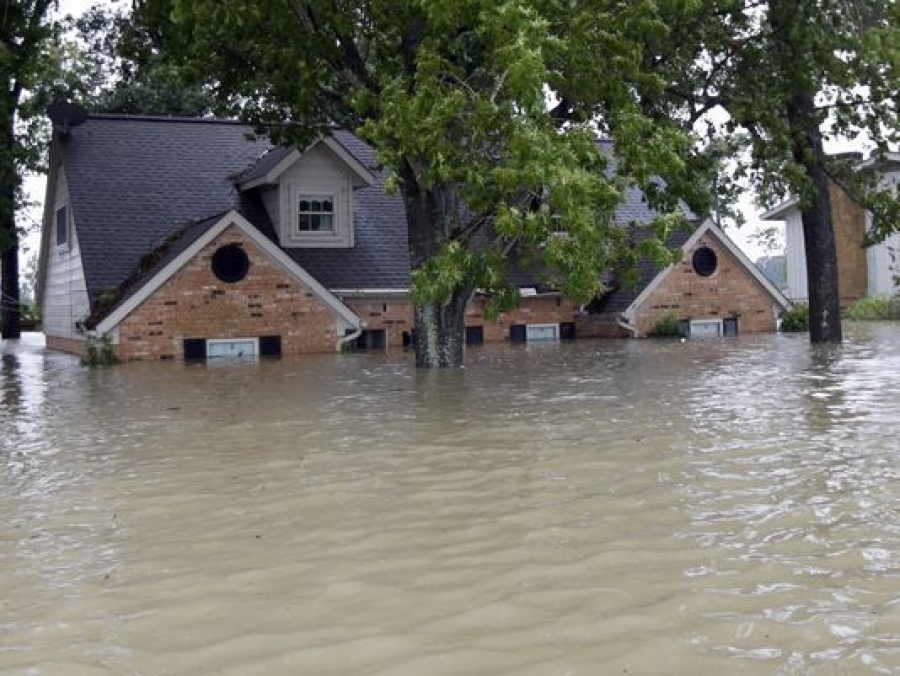In the wake of all the tragedy associated with Hurricane Harvey, and the devastation it continues to bring to Texas and the Gulf, many people have been wondering what they can do to protect their home from a flood. While flooding like what has happened in Houston and Beaumont is rare (although it is happening with increasing frequency and ferocity) and, in many cases, impossible to guard against, just a small amount of water can have big consequences. These 8 tips can help you and your home stay safe.
1. Look into flood insurance
People who live in an area that is more prone to flooding may be better prepared if they are required to have insurance and take certain precautions. Although, we learned from Harvey that only 15 percent of those who lived in massive, hardest-hit Harris County were actually covered by the National Flood Insurance Program. These policies are necessary if you live in a "100 year flood" zone, although enforcement is clearly lacking.
But in a time when climate change is creating increasingly unpredictable and powerful storms, "no state or territory is safe, according to FEMA, the Federal Emergency Management Agency," said Bankrate.
That means that everyone should be looking at their insurance policies and what they are currently covered for. "Most people think they're covered for flooding with their homeowner's insurance policy. But they're not," said Houselogic. "You must buy a separate flood insurance policy to be covered. Only 18% of homeowners in low-to-moderate risk areas have flood insurance. Of those that have it, 1 in 5 have made a claim."
2. Get to higher ground
It goes without saying that you should protect yourself in the case of a flood. But moving your important things to higher ground can help keep them safe as well. Only a tiny bit of water is is needed to do lasting damage. "The one nasty thing about flooding is that there is no (margin) of safety other than elevation," Tim Reinhold, senior vice president of research and chief engineer at the Insurance Institute for Business & Home Safety, or IBHS, told Bankrate. "Once the water reaches the level of your floor and goes an inch above, you have significant damage."
You may not be able to keep the water out in every case, but moving furniture and important items to a higher floor or to the attic can help safeguard them.

builderfish.com
Things like furnaces, water heaters, circuit breakers, and wiring should also be raised - permanently. If you know your area's flood level, go at least a foot higher when relocating your items. You'll also want to anchor and raise any fuel tanks to limit the possibility that they can spread contaminants.
3. Examine the exterior of your home
You might find areas where water can easily get in to your house. Patching any potential leak areas is step one. Now look at how the water flows away from (hopefully) or toward (hopefully not) your home. You can do an easy test with a hose or in a "normal" rainstorm, checking for areas where water naturally pools. Having sandbags in the garage that you can use as needed to help keep water from getting inside is a good emergency measure.
4. Clear gutters, drains and downspouts
While you're checking around your house, take a look at your gutters, drains and downspouts, too. This easy activity could save you from heartache by keeping water from collecting on the roof or overflowing gutters and draining toward the house.

alpinewindowwashing.com
5. Install a backflow valve
If your home makes it through a flood with minimal damage but your sewer system floods, that could mean coming home to a house full of guck. Avoiding this catastrophe is as easy as installing a backflow valve.
6. Do a major retrofit
"If your home floods frequently and moving isn't an option, you may need to take drastic and costly measures," said Bankrate. That could mean raising "your home on piers or columns so that the lowest floor is above the flood level (approximate cost: $20,000); "Wet-proofing your home by installing foundation vents that would allow water to flow through the building, instead of rising inside and causing more damage," or doing some "dry proofing by applying coatings and other sealing materials to your walls to keep out floods."
7. Buy a battery-powered sump pump
This is key because if yours is electric and the power goes out, so does your ability to pump water out of your house.

ahbelab.com
8. Change your landscaping
"Porous outdoor surfaces help water seep into the ground instead of streaming toward your home," said the National Resources Defense Council. "Digging depressions known as swales to channel storm water runoff away from your house, converting concrete or asphalt driveways to gravel or brick, and using absorbent mulch can help manage heavy rain and reduce potential flood damage. Placing a rain barrel beneath a gutter downspout will not only allay basement flooding but also help reduce flooding and pollution of local waterways."
This taps into an innovative trend being seen in places like China where "sponge cities" are in the process of being created. Currently, 16 cities are in development, with plans to roll the program out nationally in China. "Designers will concede to the wisdom of nature to ensure water is absorbed when there's an excess: instead of water-resistant concrete, permeable materials and green spaces will be used to soak up rainfall, and rivers and streams will be interconnected so that water can flow away from flooded areas," said The Guardian.
